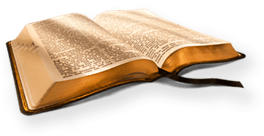King James Bible
King James Version (KJV)


The Hebrews were devout students of the wonders of the starry "firmanent (Amos 5:8; Ps. 19). In the Book of Job, which is the" "oldest book of the Bible in all probability, the constellations" "are distinguished and named. Mention is made of the "morning" "star" (Rev. 2:28; comp. Isa. 14:12), the "seven stars" and" "Pleiades, "Orion," "Arcturus," the "Great Bear" (Amos 5:8; Job" "9:9; 38:31), "the crooked serpent," Draco (Job 26:13), the" "Dioscuri, or Gemini, "Castor and Pollux" (Acts 28:11). The stars" "were called "the host of heaven" (Isa. 40:26; Jer. 33:22)." "The oldest divisions of time were mainly based on the "observation of the movements of the heavenly bodies, the" ordinances of heaven (Gen. 1:14-18; Job 38:33; Jer. 31:35; 33:25). Such observations led to the division of the year into months and the mapping out of the appearances of the stars into "twelve portions, which received from the Greeks the name of the" "zodiac. The word "Mazzaroth" (Job 38:32) means, as the margin" "notes, "the twelve signs" of the zodiac. Astronomical" observations were also necessary among the Jews in order to the "fixing of the proper time for sacred ceremonies, the "new" "moons," the "passover," etc. Many allusions are found to the" display of God's wisdom and power as seen in the starry heavens "(Ps. 8; 19:1-6; Isa. 51:6, etc.)"